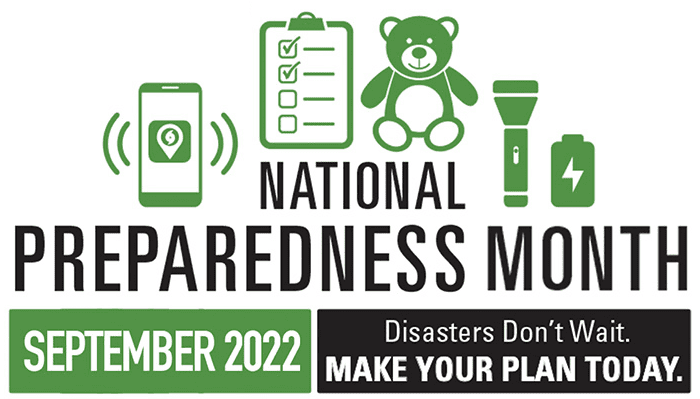High Alert Institute
Strengthen Your Business Through Disaster/Business Continuity Planning and Mutual Aid

In prior articles in this series, we explored the first two steps of the High Alert Institute’s four-step approach to disaster/business continuity risk assessment, planning, mitigation, training, and evaluation:
Step 1: Collate an All-Hazards list of planning scenarios
Step 2: Use free government software to help you identify risks, mitigations, and write your plan
This article will explore Step 3: Set up mutual aid relationships with your staff and vendors
An often-overlooked goal of disaster/business continuity planning is to grow your business. The risk assessment process often identifies opportunities for growth and refinement of business operations, increasing efficiency, and even reducing operational costs. In the words of General Dwight D. Eisenhauer, “The Plan is Nothing – Planning is EVERYTHING.”
The process of planning trains businesses and organizations to identify and optimize solutions to problems. This problem-solving skill improves with every planning cycle, training owners and staff to be better leaders. Large critical infrastructure businesses like hospitals, power plants, and supply chain companies use the planning cycle to identify and cultivate strategic partnerships to support their business operations not only during disasters but every day. These strategic relationships are known as Mutual Aid Compacts – a group of related businesses that agree to help each other during and after a local disaster, if they have the capacity to open and lend assistance. You can bolster your disaster readiness and grow your business or organization, whether large or small, by creating your own Mutual Aid Compact.
Most mutual aid compacts are memorialized with a signed, non-binding, memorandum of understanding (MOU) that lists the members of the compact and the services that each provides during a typical business day. The MOU also states that the members of the compact will assist each other by making as many products and services available as possible during and after a disaster. This provides a mutually supportive response team for any actual or potential business disruptions.
Here are 5 things that any business or organization can do to identify potential Mutual Aid Compact members (vendors and staff):
- Make a list of your “Must-Haves” to remain open or reopen during and after a disaster
- Make a list of your “I Can Do That” items to support other businesses during and after a disaster
- Make a list of suppliers for your “Must-Haves” and a list of buyers for your “I Can Do That” items
- Network – contact the suppliers and buyers on your lists and agree to work together during and after a disaster
- Have everyone sign an MOU that outlines what each member might be able to do during and after a disaster
While most businesses cannot negotiate exclusive or “first in line” service agreements like hospitals and powerplants, selecting vendors who have a history of success during disasters makes a business of any size more resilient. Start by identifying and carefully evaluating the capabilities of key staff and vendors in light of your ASPR RISC analysis and the resulting disaster/continuity plan. An inventory of staff capabilities during disaster planning and training allows for optimal deployment of personnel based on operational challenges and the specific skill sets of your team members. Vendors with a history of providing services despite a local or regional disaster have demonstrated that their business continuity plans work. Consider engaging services with several disaster-proven vendors, so that if any one vendor suffers a business interruption, your operations will continue. Meet with vendors and explain the role that they will or may be asked to play in your business continuity plan. This is the type of vendor training now required by most business continuity mandates.
Building resilience requires training, coordination, and teamwork. But your business or organization does not need to do so in isolation. We are ALWAYS stronger together!
The last article in this series will explore Step 4: Conduct disaster exercises and after-action reviews.
To access free training for staff and vendors, visit the Institute Training Library.
For more information, visit the Institute Planning4Good Page.
High Alert Institute
4800 Ben Hill Trail
Lake Wales, FL 33898
Office: 863.696.8090
FAX: 407.434.0804
EIN: 27-5078437
Info@HighAlertInstitute.org
Privacy Policy
Cookie Policy
Terms of Use
Disclaimers
Get Your Data
Shipping Policy
Message Us
Transparency
Registrations
Do Not Sell Info
Return Policy
A COPY OF THE OFFICIAL REGISTRATION AND FINANCIAL INFORMATION MAY BE OBTAINED FROM THE DIVISION OF CONSUMER SERVICES BY CALLING TOLL-FREE, WITHIN THE STATE, 1-800-435-7352 (800-HELP-FLA), OR VISITING www.FloridaConsumerHelp.com. REGISTRATION DOES NOT IMPLY ENDORSEMENT, APPROVAL, OR RECOMMENDATION BY THE STATE. Florida Registration #CH68959
REGISTRATION WITH A STATE AGENCY DOES NOT CONSTITUTE OR IMPLY ENDORSEMENT, APPROVAL OR RECOMMENDATION BY THAT STATE.










